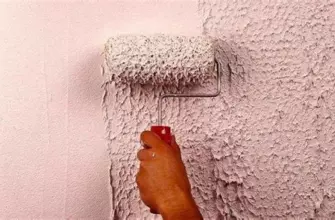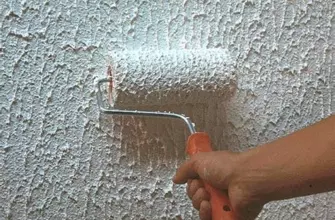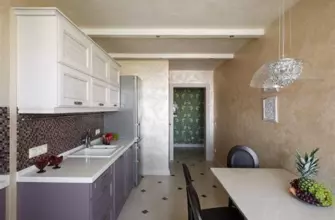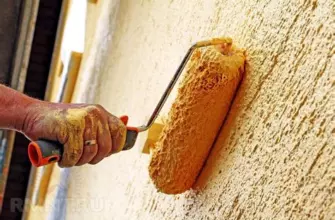Absolutely! It’s important to start gradually and focus on proper form to avoid injury. Here’s a 7-day resistance training plan designed to ease you into it:Day 1: Full Body WorkoutWarm-up: 5-10 minutes of light cardio (e.g., jogging, jumping jacks)Squats: 3 sets of 8-10 repsPush-ups (can be modified): 3 sets of 6-8 repsDumbbell Rows: 3 sets of 8-10 reps per armPlank: 3 sets, hold for 20-30 seconds eachDay 2: Rest or Active RecoveryRest day or engage in light activity like walking or yoga to promote recovery.Day 3: Lower Body FocusWarm-up: 5-10 minutes of light cardioLunges: 3 sets of 8-10 reps per legRomanian Deadlifts (with dumbbells or barbell): 3 sets of 8-10 repsCalf Raises: 3 sets of 12-15 repsGlute Bridges: 3 sets of 10-12 repsDay 4: Rest or Active RecoveryAnother day of rest or light activity to aid recovery.Day 5: Upper Body FocusWarm-up: 5-10 minutes of light cardioDumbbell Bench Press (can be done on a flat or incline bench): 3 sets of 8-10 repsDumbbell Shoulder Press: 3 sets of 8-10 repsLat Pulldowns (with bands or machine): 3 sets of 8-10 repsBicep Curls: 3 sets of 10-12 repsDay 6: Rest or Active RecoveryGive your muscles a chance to recover or engage in light activity to promote blood flow and mobility.Day 7: Full Body CircuitWarm-up: 5-10 minutes of light cardioCircuit: Perform each exercise back-to-back with minimal rest, then rest for 1-2 minutes and repeat the circuit 2 more times.Bodyweight Squats: 12 repsPush-ups (can be modified): 10 repsDumbbell Rows: 10 reps per armPlank: Hold for 30 secondsRemember to listen to your body, and if you experience any pain beyond normal muscle soreness, consider scaling back or consulting a fitness professional. As you progress, you can increase the intensity and complexity of your workouts. Also, don’t forget to hydrate well and maintain a balanced diet to support your training.
Преимущества использования песчаной штукатурки в интерьере
Песчаная штукатурка, становится все более популярным выбором в дизайне интерьера, предоставляя уникальные эстетические и функциональные преимущества. Вот несколько ключевых причин, почему использование песчаной штукатурки может преобразить ваш интерьер и сделать его более привлекательным и стильным:
-
Естественный вид и текстура: Песчаная штукатурка придает стенам и потолкам неповторимый естественный вид и тактильную текстуру, которая добавляет теплоту и уют в любое помещение. Ее широкий спектр оттенков и возможность различных отделочных методов позволяют создавать разнообразные эффекты, подходящие для любого стиля интерьера.
-
Прочность и долговечность: Песчаная штукатурка обладает высокой прочностью и стойкостью к механическим повреждениям, что делает ее идеальным выбором для поверхностей с высоким уровнем эксплуатации, таких как прихожие, коридоры и кухни. Она также обладает отличными водоотталкивающими свойствами, что делает ее подходящей для ванных комнат и кухонь.
-
Экологическая безопасность: Песчаная штукатурка изготавливается из натуральных компонентов, таких как песок, цемент и добавки, что делает ее экологически безопасным выбором для интерьера. Она не содержит вредных химических веществ и испарений, что особенно важно для людей, страдающих аллергиями или проблемами с дыханием.
Использование песчаной штукатурки в интерьере позволяет создать уникальные и привлекательные пространства, обладающие индивидуальным характером и стилем.
Технология нанесения декоративной штукатурки с песком
Один из ключевых этапов процесса нанесения декоративной штукатурки с песком – подготовка поверхности. Поверхность должна быть чистой, сухой и ровной. При необходимости удаляются старые слои краски или штукатурки, затем поверхность выравнивается и шлифуется. Этот этап играет важную роль, поскольку от качества подготовки зависит долговечность и качество покрытия.
Необходимо учитывать, что декоративная штукатурка с песком требует определенных навыков и опыта в работе с материалом. Неправильное нанесение может привести к неровностям и дефектам, что негативно скажется на внешнем виде интерьера.
После подготовки поверхности следует переходить к самому процессу нанесения штукатурки. Обычно это делается при помощи шпателей и специальных инструментов. Штукатурка равномерно наносится на поверхность, а затем придается желаемая текстура с использованием специальных приемов и инструментов.
Важно помнить, что перед началом работы с декоративной штукатуркой с песком необходимо ознакомиться с инструкцией производителя и тщательно следовать рекомендациям. Это поможет избежать ошибок и обеспечить качественный результат.
После нанесения и высыхания штукатурки следует провести финальную отделку и защитный слой, чтобы сохранить ее эстетический вид и продлить срок службы. Следуя правильной технологии и рекомендациям, можно создать впечатляющие и долговечные интерьеры с использованием декоративной штукатурки с песком.
Absolutely! Exploring Seoul off the beaten path can be a fascinating experience. Here’s a unique itinerary for your 4-day trip:Day 1: Discover Traditional NeighborhoodsMorning: Start your day with a leisurely stroll through Bukchon Hanok Village. This area is filled with traditional Korean houses (hanoks) and small alleyways. Take your time to soak in the atmosphere and maybe even participate in a traditional tea ceremony.Lunch: Try some local delicacies at Tongin Market. This market offers a unique experience where you can use old Korean coins to purchase traditional street food from different vendors.Afternoon: Head to Ikseon-dong Hanok Village, another historic neighborhood with beautifully preserved hanok buildings. Explore the quaint shops, cafes, and galleries tucked away in these alleys.Evening: Experience the nightlife of Seoul in Yeonnam-dong. This trendy neighborhood is filled with cozy cafes, hip restaurants, and vibrant street art. Enjoy a relaxing evening sipping coffee or trying out some fusion cuisine.Day 2: Art and Culture ExplorationMorning: Start your day at Seoul Museum of Art (SeMA) Nam Seoul Annex. This contemporary art museum showcases works by both Korean and international artists in a serene setting.Lunch: Have a unique dining experience at Daelim Changgo Gallery CO:LUMN. This gallery-restaurant hybrid offers a fusion of art and cuisine, with each dish presented as a work of art.Afternoon: Explore the Hongdae area, known for its youthful energy and artistic vibe. Wander through Hongdae’s indie shops, street performances, and underground music scene.Evening: Attend a performance at the Seoul Arts Center. This prestigious cultural complex hosts various events, including classical concerts, ballet performances, and traditional Korean music shows.Day 3: Nature and RelaxationMorning: Escape the city hustle and bustle by taking a trip to Naksan Park. This hidden gem offers panoramic views of Seoul and features winding paths, historic city walls, and tranquil gardens.Lunch: Picnic at Haneul Park. This former landfill has been transformed into a beautiful ecological park with vast grassy fields and stunning views of the city skyline.Afternoon: Visit Seoul Forest, a sprawling urban park that combines nature with art installations and recreational facilities. Rent a bike and explore the forest trails or simply relax by the riverside.Evening: Enjoy a leisurely dinner at one of the riverside restaurants in Banpo Hangang Park. Watch the Banpo Bridge Rainbow Fountain show, where water jets illuminated by colorful lights dance to music.Day 4: Hidden Gems and Local ExperiencesMorning: Take a trip to Seochon, a charming neighborhood near Gyeongbokgung Palace. Explore the narrow alleys lined with traditional houses, boutique shops, and cozy cafes.Lunch: Try some authentic Korean temple cuisine at Balwoo Gongyang. This Michelin-starred restaurant offers a unique dining experience rooted in Buddhist principles.Afternoon: Wander through Insadong’s backstreets. While Insadong is popular, its quieter alleys hide unique art galleries, antique shops, and traditional craft workshops.Evening: End your trip with a visit to a traditional Korean sauna (jjimjilbang) like Dragon Hill Spa. Relax in the various saunas, soak in hot baths, and indulge in a rejuvenating Korean body scrub before heading back home.This itinerary offers a mix of cultural exploration, artistic experiences, nature escapes, and local delights, providing a different perspective of Seoul beyond the typical tourist spots. Enjoy your adventure!
Sure! Automating the sending of daily email reports in Python can be done using the smtplib and email libraries. Here’s a basic script to achieve that:pythonCopy codeimport smtplib
from email.mime.multipart import MIMEMultipart
from email.mime.text import MIMEText
import datetime
def send_email(subject, body, to_email):
# Set up the SMTP server
smtp_server = ‘your_smtp_server’
smtp_port = 587 # or the port your SMTP server uses
sender_email = ‘your_email@example.com’
password = ‘your_email_password’
# Create message container
msg = MIMEMultipart()
msg[‘From’] = sender_email
msg[‘To’] = to_email
msg[‘Subject’] = subject
# Add body to email
msg.attach(MIMEText(body, ‘plain’))
# Initiate SMTP connection
server = smtplib.SMTP(smtp_server, smtp_port)
server.starttls()
# Login to email server
server.login(sender_email, password)
# Send email
server.sendmail(sender_email, to_email, msg.as_string())
# Close SMTP connection
server.quit()
def generate_daily_report():
# Generate daily report logic goes here
today = datetime.date.today()
report = f»Daily Report for {today}nn» # Modify this according to your reporting logic
return report
def main():
# Generate daily report
report_subject = «Daily Report»
report_body = generate_daily_report()
to_email = «recipient@example.com»
# Send email
send_email(report_subject, report_body, to_email)
if __name__ == «__main__»:
main()
Now, let’s set it up:Install Necessary Libraries: First, ensure you have the smtplib and email libraries installed. You can install them using pip:Copy codepip install secure-smtplib
Configure SMTP Server: Replace ‘your_smtp_server’, 587, ‘your_email@example.com’, and ‘your_email_password’ with your SMTP server details.Generate Daily Report: Implement the generate_daily_report() function according to your reporting needs. This function should return the content of your daily report as a string.Set Recipient Email: Replace «recipient@example.com» with the email address where you want to receive the daily report.Schedule Script Execution: You can use cron jobs (on Unix-like systems) or Task Scheduler (on Windows) to schedule the execution of this script daily.Ensure Security: It’s important to handle your email credentials securely. Avoid hardcoding your email password directly in the script. Instead, consider using environment variables or a configuration file.After setting up and scheduling the script, it will send the daily email reports automatically at the specified time.









